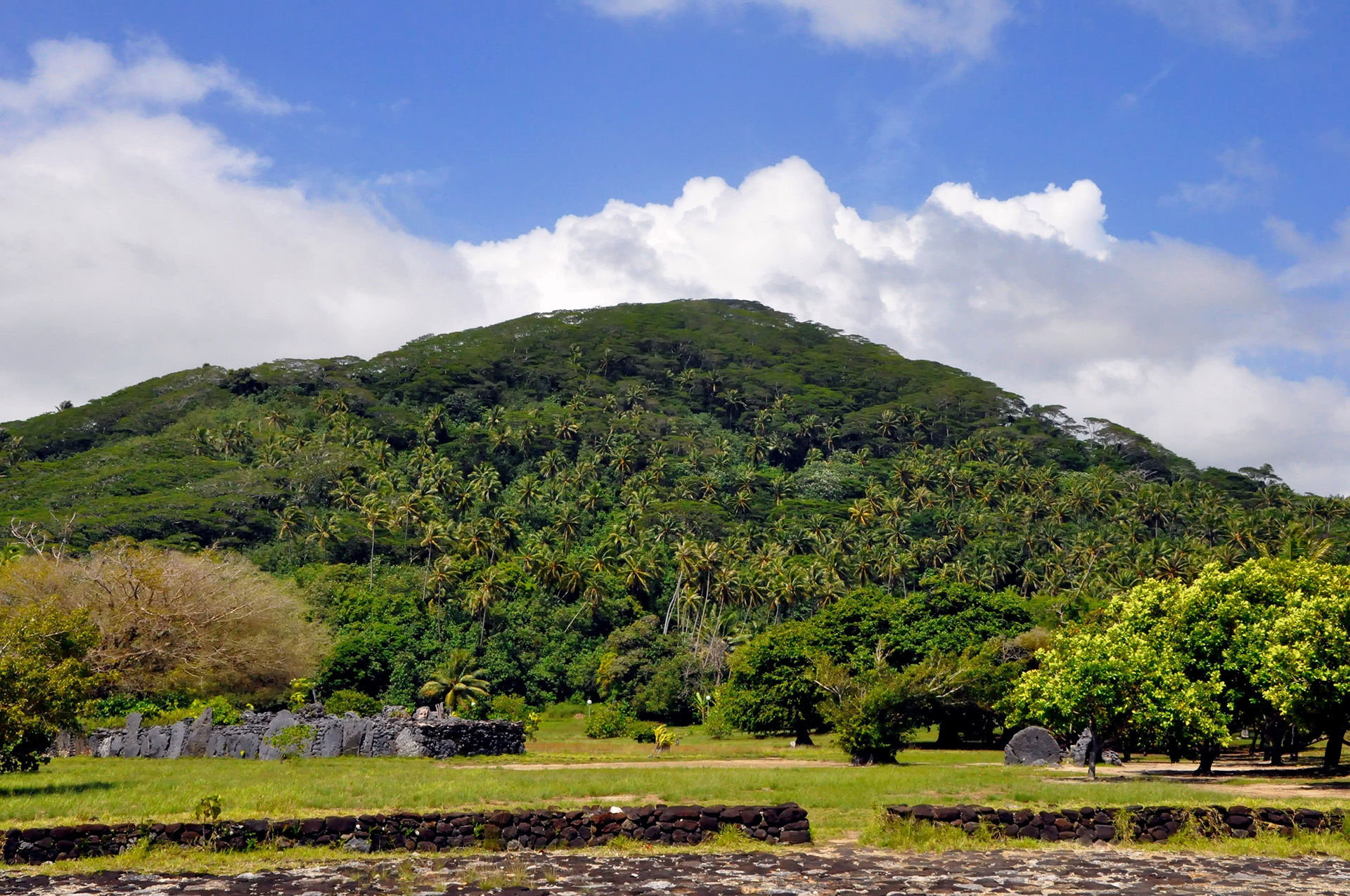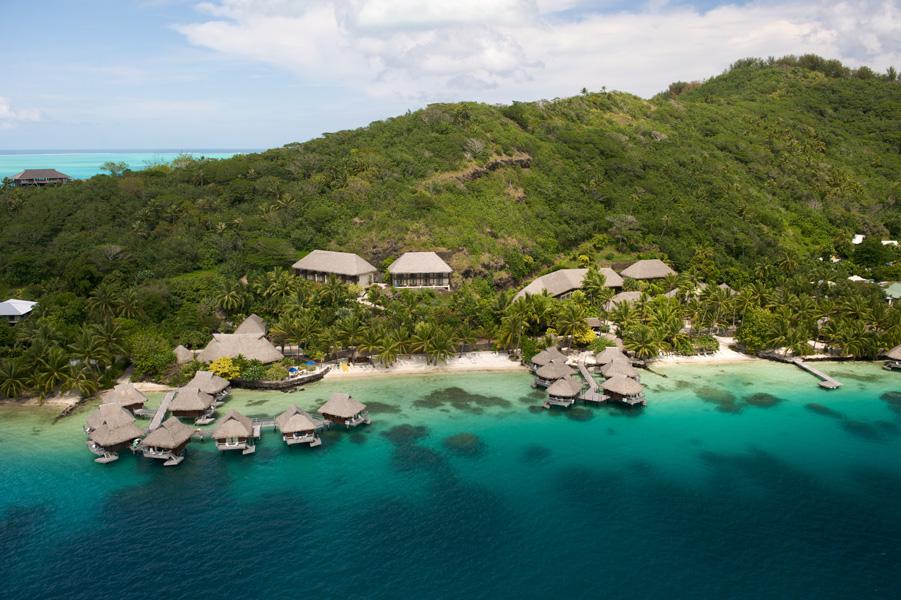
Island High Points and Walks in the Footsteps of Kings
The major islands of Tahiti are dominated by tall, green mountains. Framed by lagoons and outlying reefs, these peaks beckon hikers to come hither and climb to panoramic overlooks or traverse the lush valleys that lie between the slopes. Some routes are challenging, and best left to the ambitious and athletic. But others are far less demanding and well-suited to casual half-day excursions. Walkers can follow centuries-old footpaths that lead to long-lost villages and the foundations of temples where the kings of Polynesia once ruled. Along the way, there is much to discover about the island's history and its natural resources.
Highlights
- Best for: All travellers, watersports and spa enthusiasts and adventures ranging from soft to rugged
- Best season to visit: Year round
- Weather: North America's summer and early fall are the coolest and driest months in Tahiti, with temperatures ranging from 70 to 82 degrees. November to March is a bit warmer, with more chance of rain, but there is no bad time for a visit
Tahiti Information
Hiking in Tahiti Overview
The majority of hiking trails on the islands of Tahiti, Moorea and Bora Bora either ascend to mountain peaks or lead to interior valleys. Routes that climb can be strenuous and may become difficult in wet weather. Valley hikes are easier and less weather dependent.
Hiking in Tahiti Tips
Not all trails are well marked, and it's best to go with a guide, not only to stay on route but also to tap into their knowledge of island history, biology and geology. Rain showers can happen suddenly at any time of year, with the months from May through October being drier.
Best Places to Hike in Tahiti
The trail into Bora Bora's Valley of The Kings brings hikers to recently-discovered remains of ancient Polynesian homes and temples, and a huge banyan tree that is a living mausoleum. Also popular are hikes to the summit of Mount Pahia. Moorea offers climbs to the Three Coconut Trees Pass and loops through the Opunohau Valley. On Tahiti, hiking trails zig-zag the eastern coast of Tahiti Iti, around Lake Vaihiria and up Mount Aorai.
What to Pack for Hiking in Tahiti
Include plenty of water and snacks in a day pack. Add a light, waterproof windbreaker for passing showers. Lightweight long pants will keep legs protected from ferns and branches that line some trails. Include a brimmed hat, sunscreen and sunglasses to manage the bright tropical sunshine.
Resorts

The Islands of Tahiti
Maitai Polynesia Resort Bora Bora
See Packages & Learn More

The Islands of Tahiti
Le Bora Bora By Pearl Resorts
Book on-line or Contact Caradonna Adventures at 800.328.2288 or email us sales@caradonna.com.
See Packages & Learn More
Passport and/or Visa Requirements
A valid U.S. passport is required for entry into Tahiti which must be valid for 3 months beyond your date of entry. Your passport needs to have at least 1 blank page for the Tahiti entry stamp. Proof of return or onward ticket is required. No visas are required for tourist stays of less than 90 days.
Immunizations
No immunizations are required for entry into Tahiti, but we would always suggest that you check with your doctor and the Centers for Disease Control on recommended vaccinations for travel to Tahiti at Traveler's Health CDC.
Culture and Customs
Tahiti and the Society Islands loom large in our collective images of tropical paradise. These are the islands that seduced the crew of the Bounty to mutiny, inspired the works of Gauguin and Melville, and now entice celebrities, newlyweds and dreamers to escape the every day for a thatch-roofed bungalow perched over an electric-blue lagoon. As a semi-autonomous territory of France, the islands combine Continental flair with the ancient traditions of Polynesia. Evidence of this blending begins at breakfast, where a bowl of cafe au lait and a buttery croissant are accompanied by fresh papaya, mango and breadfruit, served with a spray of tropical flowers. Tattoo is a Tahitian word, and body art is considered a sign of beauty. Dance has always played an important role in island life, with performances for everything from welcoming visitors to challenging an enemy or seducing a mate. Traditions are kept alive at the annual gathering of Heiva i Tahiti, when islanders from across the archipelago gather at Papeete for celebrations that include elaborate spectacles of song and dance, along with arts and crafts fairs and traditional sporting events such as canoe races and strong man contests. A year-round staple of Tahitian culture are flowers, which grow in abundance across the islands. Bright blossoms are worn in floral crowns or as single displays behind the ears, denoting either one's availability or commitment. The same long-standing traditions of hospitality that welcomed early European explorers and subsequent generations of sailors are now lavished on arriving vacationers, who will discover not only some of the friendliest people in the world, but also some of the most seductive landscapes, where sea, sky and island come together in riotous shades of blue and green.
Electricity, Phone and Internet Access
Electricity in Tahiti is 220 Volts, 60 cycles. Hotels may use 110 or 220 Volts depending on your location, so a converter/adapter is often required for appliances you bring, including computers.
Direct dialing international calling is available in most hotels. When calling from the U.S. to Tahiti, dial 011 and then the country code of 689 along with the local number. Check with your cell phone provider to see if they have an international plan that is compatible in Tahiti for voice, text and data.
Internet access is available in many hotels and resorts.
Water Quality
Tap water is safe to drink in Papeete and Bora Bora. Elsewhere bottled water is recommended and readily available.
Language & Currency
French and Tahitian are the official languages, but English is spoken and understood in tourist areas.
The currency of Tahiti is the French Pacific Franc (XPF). Bank notes come in denominations of 500, 1000, 5000 and 10,000, and coins in denominations of 1, 2, 5, 10, 20, 50 and 100.
Credit cards are readily accepted in most tourist destinations. Most guests exchange money at the airport upon arrival or at their hotel, but the best exchange rate should be at a local bank.
Time
There are three time zones in Tahiti. The Society Islands including Papeete and Moorea and the Leeward Islands including Bora Bora, and the Tuamotu Islands including Fakarava and Rangiroa are all 10 hours behind Greenwich Mean Time (-10 GMT). The Gambier Islands are 9 hours behind Greenwich Mean Time (-9 GMT). The Marquesas Islands are 9.5 hours behind Greenwich Mean Time (-9.5 GMT). Tahiti does not use daylight savings time.
Location, Size and Population
Tahiti is located south of the equator halfway between California and Australia. The islands of Tahiti, known as French Polynesia, consist of 5 island groups. There are 118 islands with a total land mass of 1,544 square miles.
The population of French Polynesia is 285,699 (2016).